Volcanoes vary greatly in size and shape. Volcanoes also may have a variety of other features, which in turn, have a great range in diversity of form, size, shape, and permanence. Many volcanoes have craters at their summits and/or at the location of other vents. Some craters contain water lakes. Lakes of molten or solidified lava may exist on some volcanoes. Fumaroles and other geothermal features are a product of heat from magma reservoirs and volcanic gases.
-
Article 1: Volcanic Craters
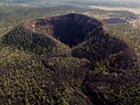
Craters are present at many volcanic vents. The size and shape of volcanic craters vary a great deal from volcano to volcano, and they even change during the lifespan of an active volcano. Craters can become filled by lava domes or lava flows, and new craters may form during subsequent eruptions. Read more
-
Article 2: Volcanic Vents
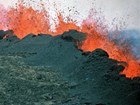
A volcanic vent is the opening where eruptions occur. Lava, tephra (volcanic ash, lapilli, or bombs), fragmented rock, and/or volcanic gases may be emitted. Vents may be located at the summit or flanks of a volcano and may exist as elongated fissures. Read more
-
Article 3: Crater Lakes
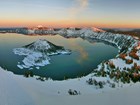
Water lakes may exist in craters and calderas (large collapse features) as these depressions can become filled by rainwater or melting snow or ice, or be places where groundwater can accumulate at the surface. Crater lakes can be long-lived or ephemeral, and may contain fresh or acidic waters. Read more
-
Article 4: Fumaroles
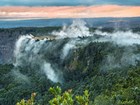
Fumaroles are places where steam and volcanic gases are emitted. They are present on most active volcanoes. The occurrence of fumaroles and other geothermal features such as hot springs, geysers, and mud pots are important signs that a volcano is active. Read more
-
Article 5: Lava Lakes
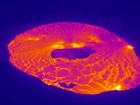
Lakes of molten or solidified lava are usually only found in pit craters or calderas (both are types of collapse features) on shield volcanoes. Lava lakes may occasionally occur within other vent areas, or sometimes even on pooled lava flows. Long-lasting lava lakes typically only form in places where there is good connectivity with a shallow magma reservoir. Read more
